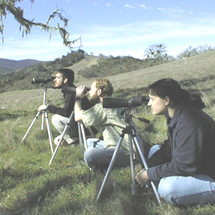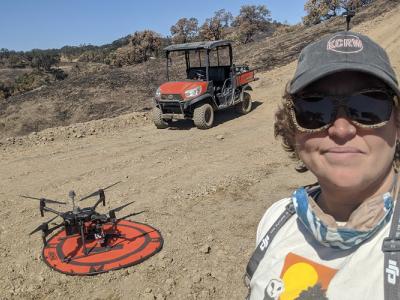Hastings Natural History Reservation

Hastings is a Biological Field Station of the University of California, Museum of Vertebrate Zoology (MVZ) and Natural Reserve System. It provides provide the wildlands and facilities to conduct university and graduate level studies of natural systems in the upper Carmel Valley, Monterey County, California. An area of about 2,500 acres, Hastings was set aside in 1937 to be managed with minimal disturbance. In 1971, Hastings was added to the UC Systemwide Natural Reserve System. Hastings provides housing for up to 60 visiting researchers or class members in an ensemble of 9 ranch buildings and cabins. An endowment from the Hastings family, managed by UC, and MVZ supported resident staff researchers at Hastings for many years. Current resident staff include a full-time Reserve Steward and the Resident Reserve Director. Hastings provides housing, lab space, Internet connectivity, data bases, historical ecological studies done on site (~600) and an undisturbed place for research and teaching at the college level. About 400 students and 500 researchers and other users each year visit Hastings compiling about 5,000 user-days each year.
Research: Hastings has had a diverse, nationally recognized basic research program, and has supported applied research important at the local and state level. Research at Hastings spans a wide variety of topics; investigations of atmospheric gases, soil microbial communities, insects, grassland ecology, acorn production, genetics and population biology of small mammals and amphibians, ecosystem restoration, behavioral ecology of birds and analysis of spatial synchrony in ecological process at many scales. Hastings’s resident research program was particularly strong, making internationally regarded contributions to studies of behavioral ecology. Hastings scientists have continued to develop insights into the ecology, social structure, genetics, habitat use and breeding biology of several species (birds, mammals). Detailed studies have revealed insights into long-term trends and restoration of the native grasslands in California.
Teaching/Outreach: Fourteen courses with field components use Hastings each year. Many more are taught every other year. These courses are taught by four different UC campuses, a dozen private colleges in California and others from across North America. Five California State University campuses use Hastings for teaching. Hastings offers University level short courses entirely taught at the reserve (e.g., Jepson Herbarium, Berkeley.)
Since 2003, Hastings has been a partner in an NSF funded, K-12 program “Exploring California Biodiversity”. Graduate students spend a year with a K-12 teacher and selected groups of students from under-served Bay Area schools spend 3-day learning adventures at Hastings. This project connects Berkeley Natural History Museums, Berkeley Field Station and local K-12 communities. Hastings has worked for decades with Carmel Unified School District

